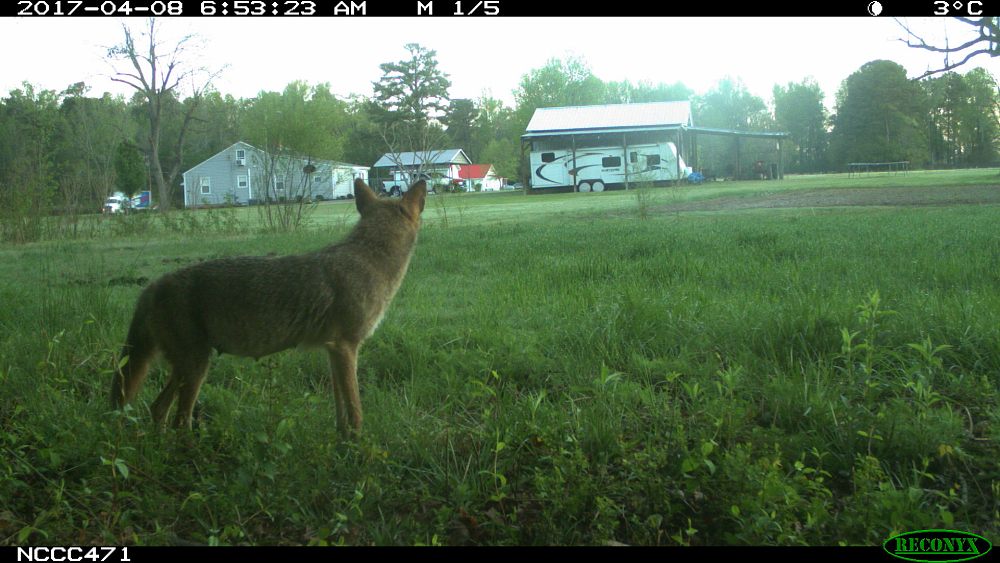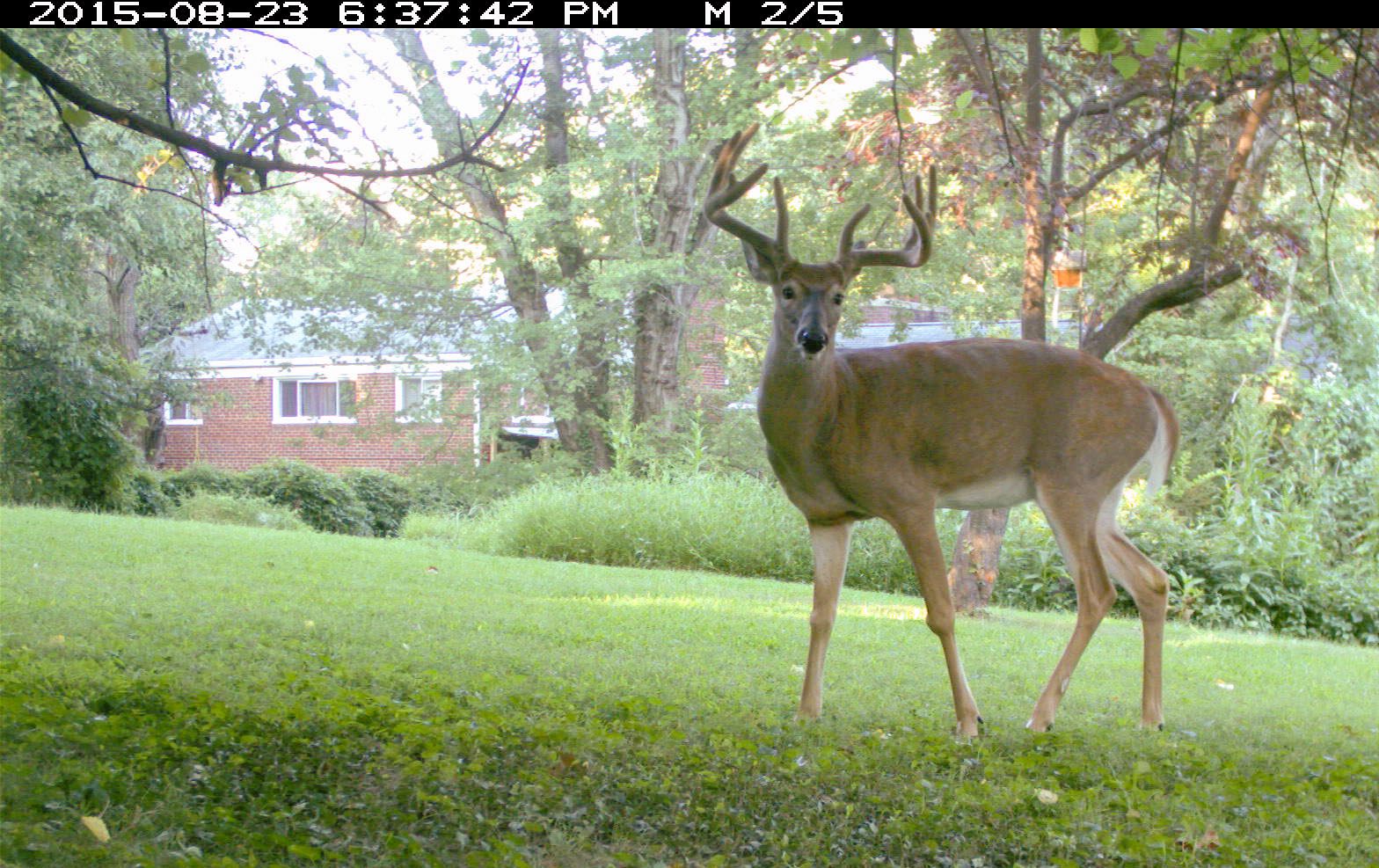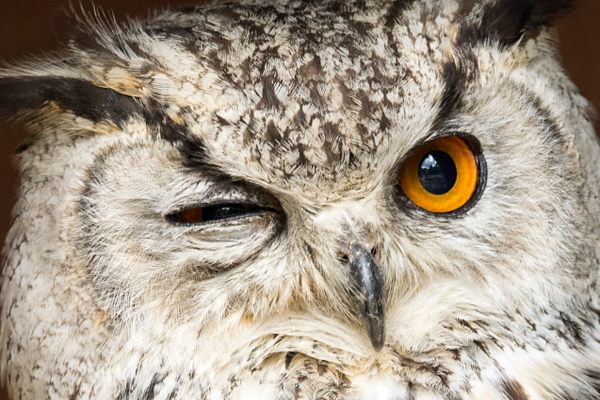Non-Human Mammals Love the Suburbs, Too
A new study suggests they’re learning to live in the urban sprawl.

Early one April morning, a coyote crosses a suburban backyard. For some reason, she stops to take a look at the house beyond. It’s spacious, with two floors and a separate garage. There’s even a trampoline. Her ears prick up as she gazes. She seems to be considering a move.
Such scenes go against our sense of things: two-legged creatures belong on lawns, four-legged ones in the untrammeled woods. But they aren’t as rare as you might expect. Recently, a group of researchers used camera traps to survey mammals in and around Raleigh, North Carolina and Washington, D.C., trying to get a sense of where they spend their time.
As it turns out, the comforts of the suburbs aren’t lost on non-human creatures. “Indeed,” the researchers write, “most species appear to use suburban areas at least as much as wild land.”

As human habitation takes up more and more space, ecologists strive to understand which creatures are able to adapt to our strange infrastructural habits, and which get displaced. “There have been a number of studies relatively recently on mammals in more suburban areas, and they show conflicting results,” says Arielle Parsons, a doctoral student at North Carolina State University and the lead author of the paper. “Because of all these conflicting smaller-scale studies, we wanted to get a look over multiple cities.”
They were also inspired by increasing accounts from the western United States of large carnivores moving closer to cities: bears relocating to Boulder, for example, and mountain lions trying their luck in Vegas. “We wanted to look at that here in the East,” Parsons says.
To achieve this larger scale, Parsons and her colleagues asked for the help of citizen scientists. Over 500 volunteers manned a network of 1,427 motion-triggered cameras. They placed them in areas ranging from “urban” to “wild,” with categories determined by the relative density of houses. (To be truly “wild,” for example, a space had to have fewer than one house for every two square kilometers of land.) Then they sat back and waited for the surveillance footage to roll in.

Parsons, who lives in Raleigh herself, has overseen a number of camera trap studies, and runs an ongoing survey called North Carolina’s Candid Critters. (She was happy to have such broad participation in this project: She and her colleagues have put so many traps out in their own backyards at this point, “we’re kind of bored with the same possum that comes by,” she says). But when she crunched the data, and saw the number and types of species that have been hanging out in her neighborhood, even she was surprised.
“We’ve known for a long time that there are lots of certain mammals in suburbs,” she says. “Your raccoons, your white-tailed deer, your eastern gray squirrels.” But the photos showed both high species diversity and high abundance from wildest places all the way to the suburbs. There were bobcats near the bushes. There were cottontails in the cul-de-sacs. (The one exception was urban D.C., which registered only six species and, excitement-wise, topped out at woodchucks.)

“This is good news, really,” says Parsons. At the same time, she cautions against overinterpreting the results. “The study was just on mammals chipmunk-sized and up,” she points out. Just because bobcats and deer can hack it in the ‘burbs doesn’t mean bats or birds or bugs are doing as well—and indeed, plenty of studies suggest they’re not. “By no means do our results indicate that we don’t need to keep moving forward with conservation of green spaces in cities, and wild areas outside of cities,” she says.
In other words, let’s not rush to rezone the wilderness. But if you happen to be putting your house up for sale, consider leaving some pamphlets in the shrubs. You never know who might want to get a little closer.




















Follow us on Twitter to get the latest on the world's hidden wonders.
Like us on Facebook to get the latest on the world's hidden wonders.
Follow us on Twitter Like us on Facebook